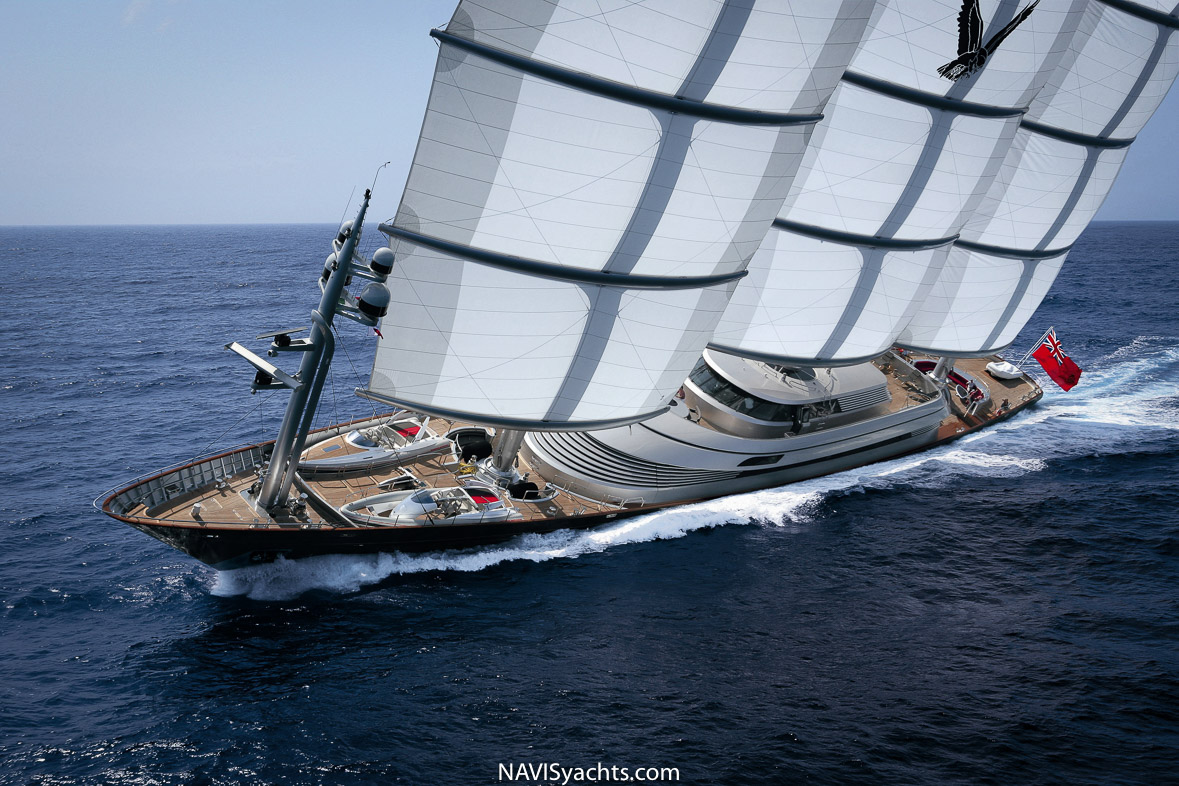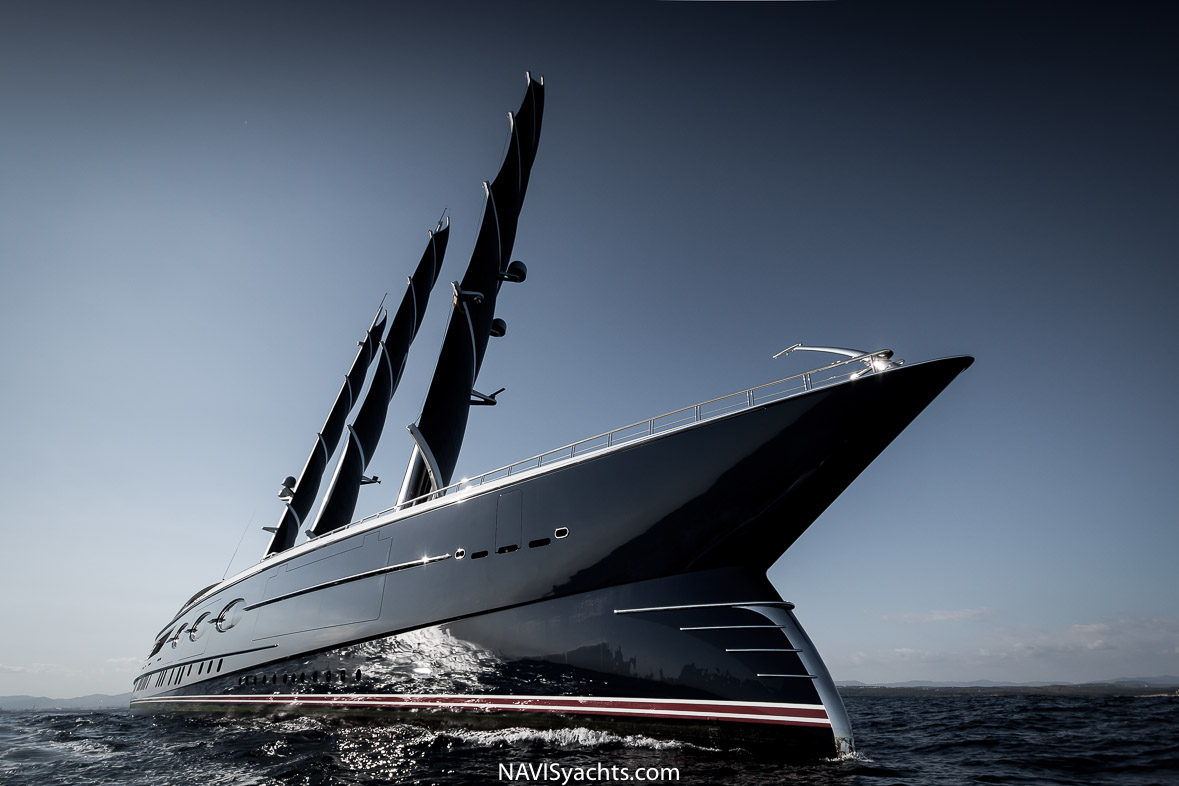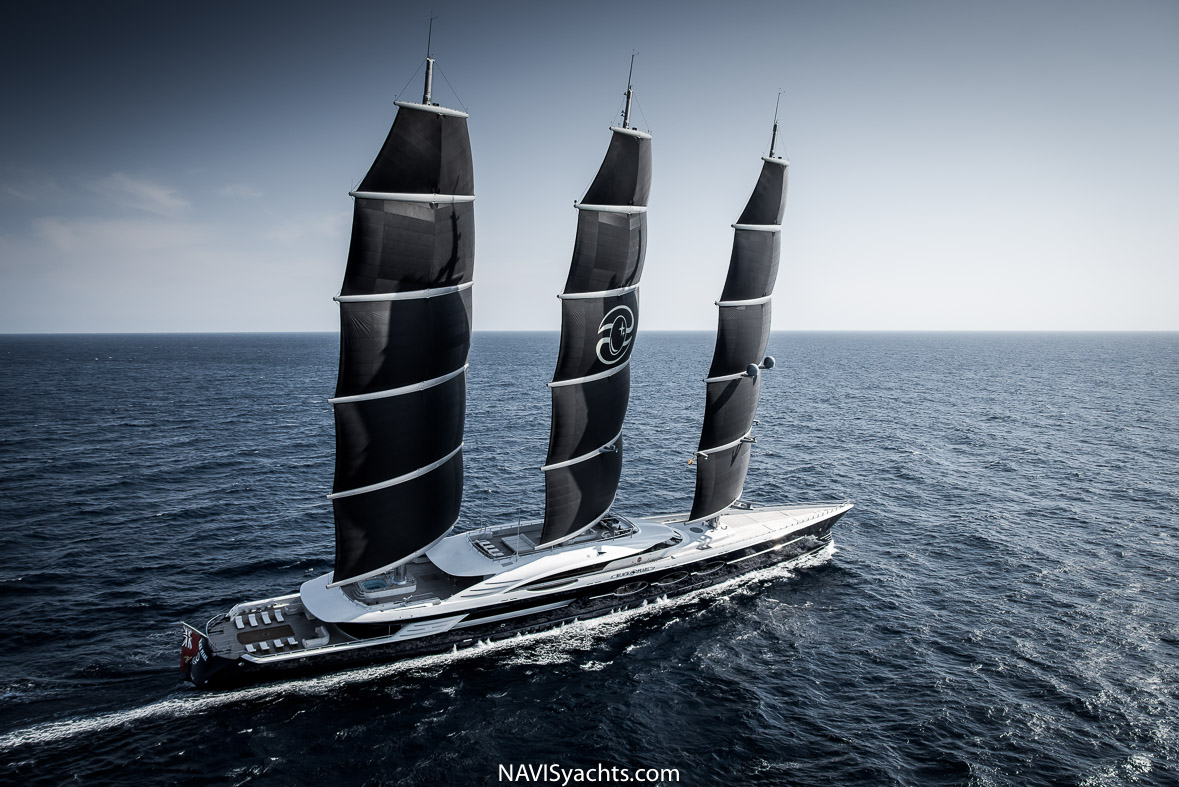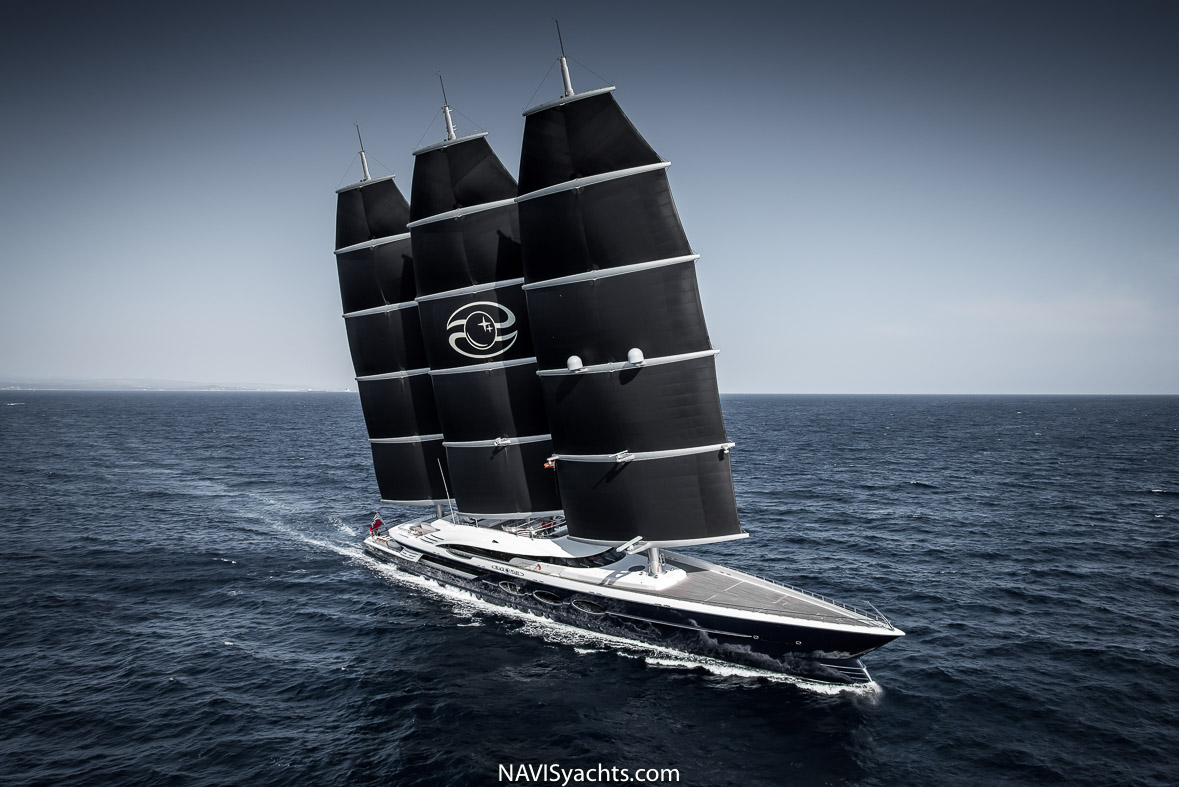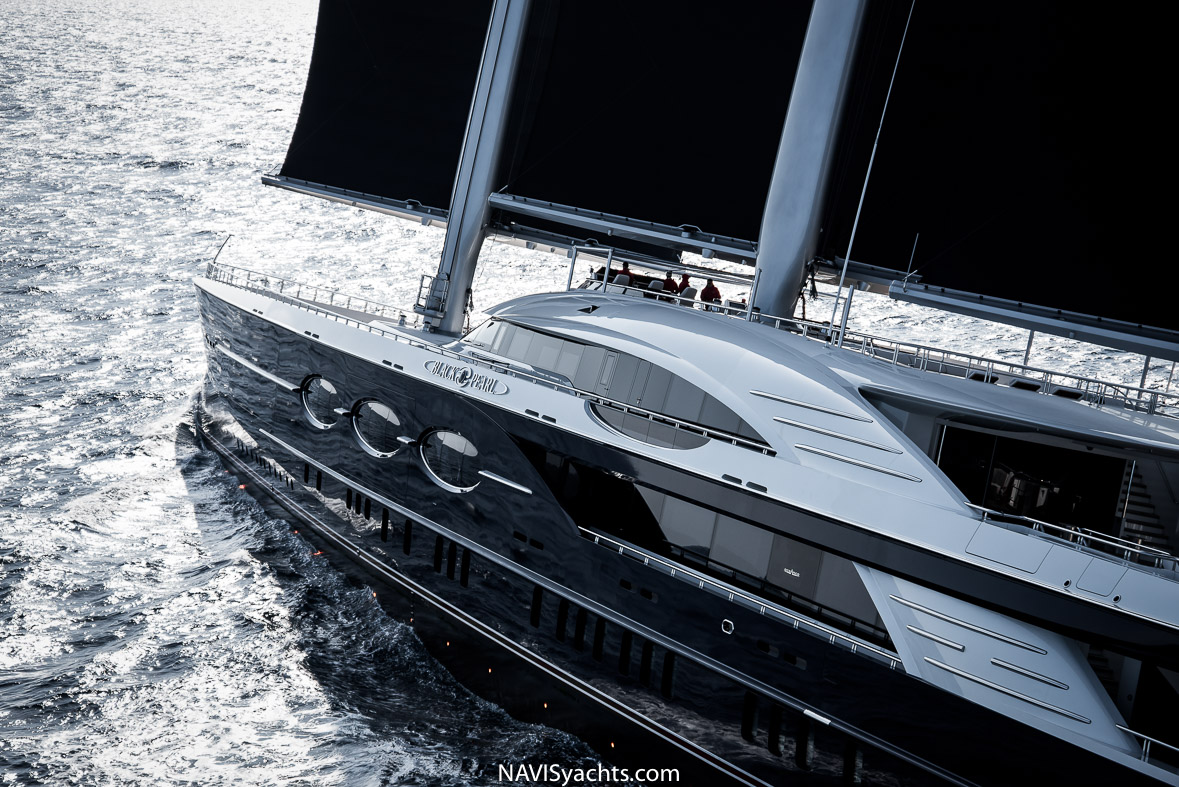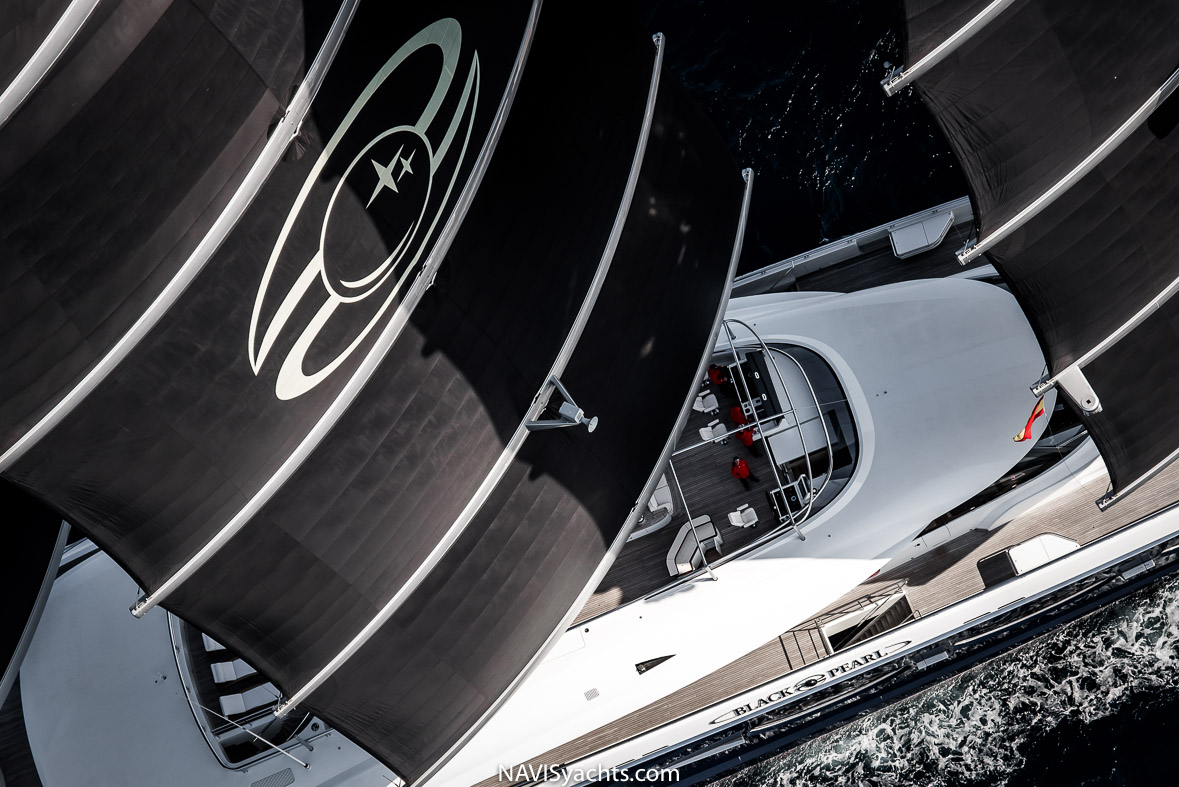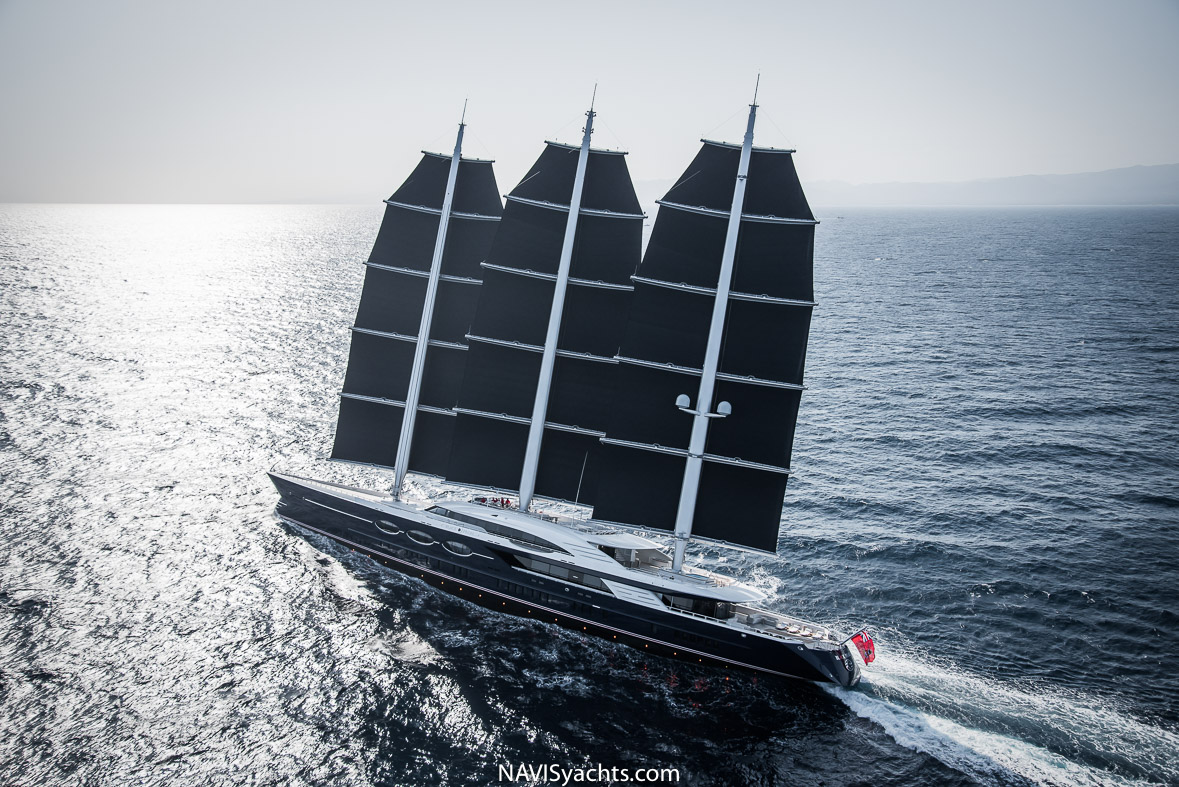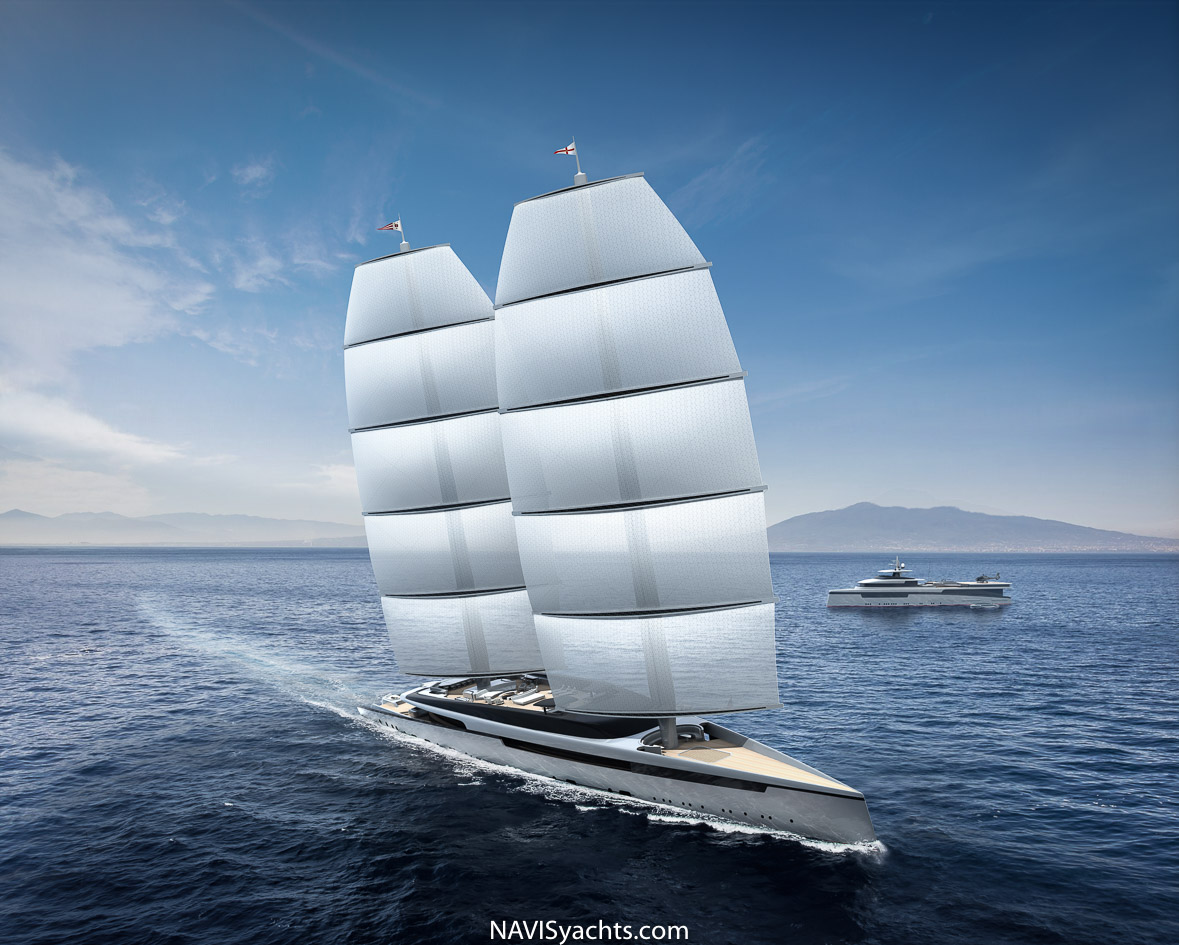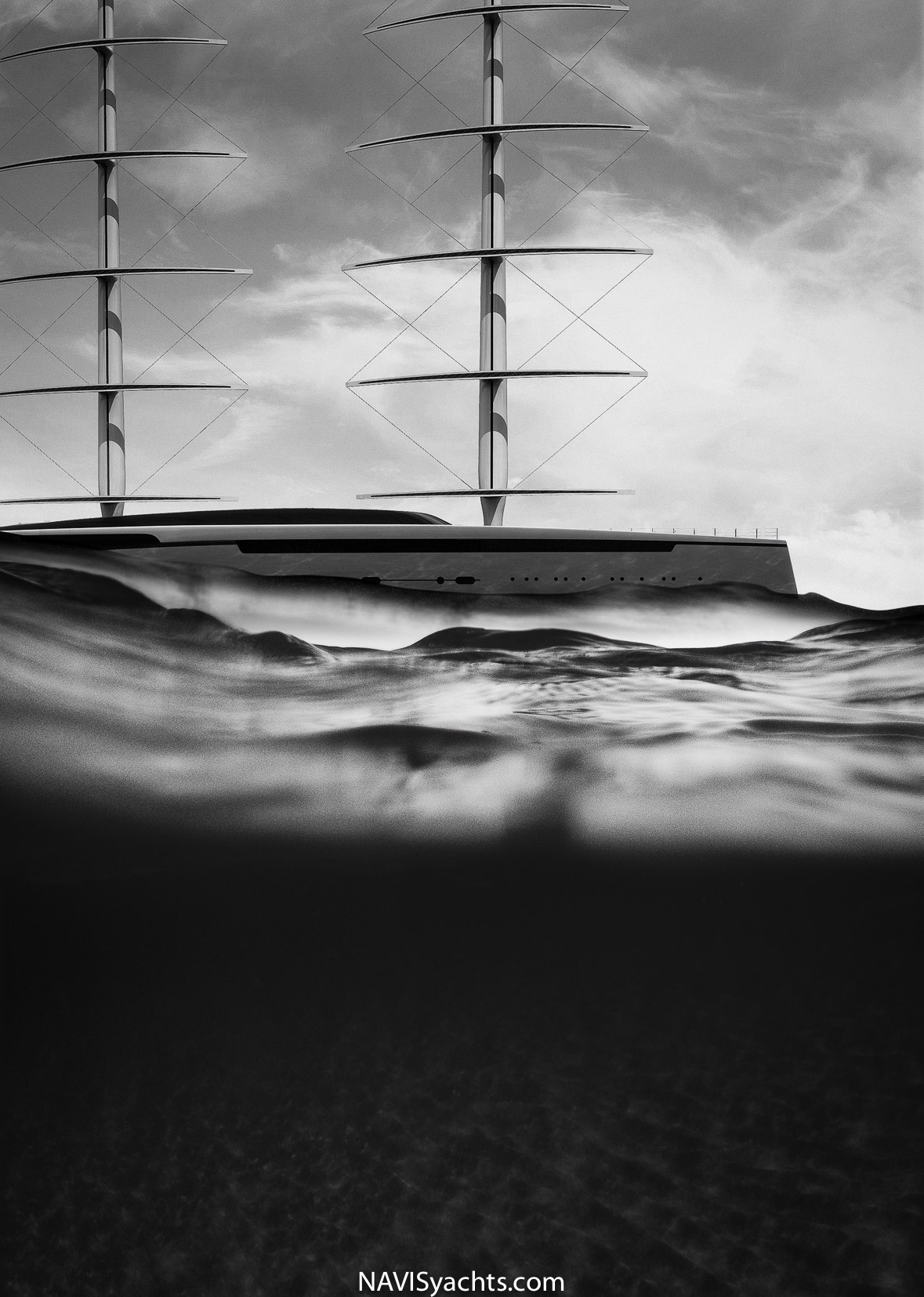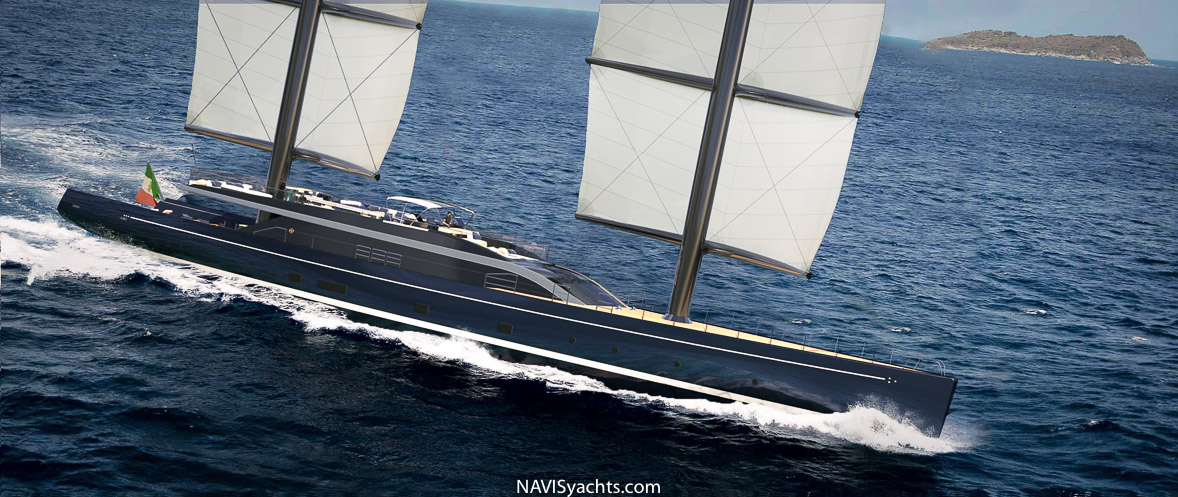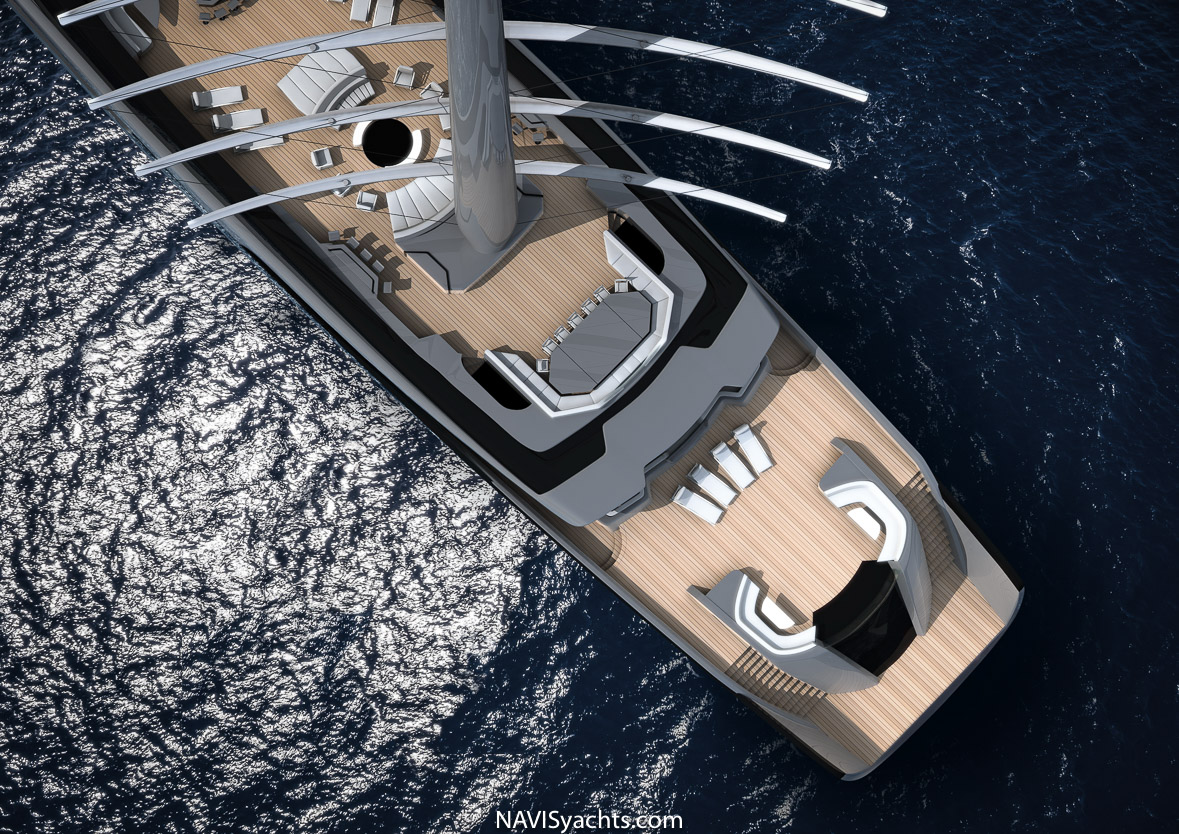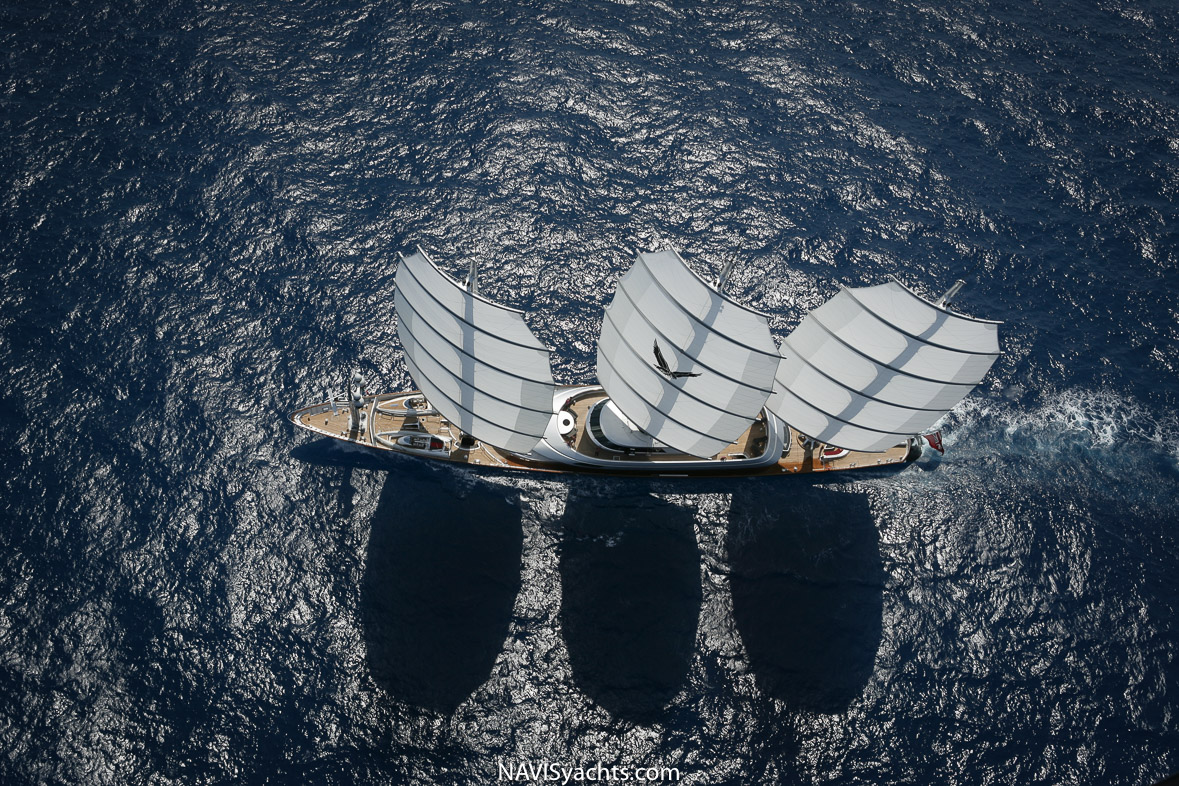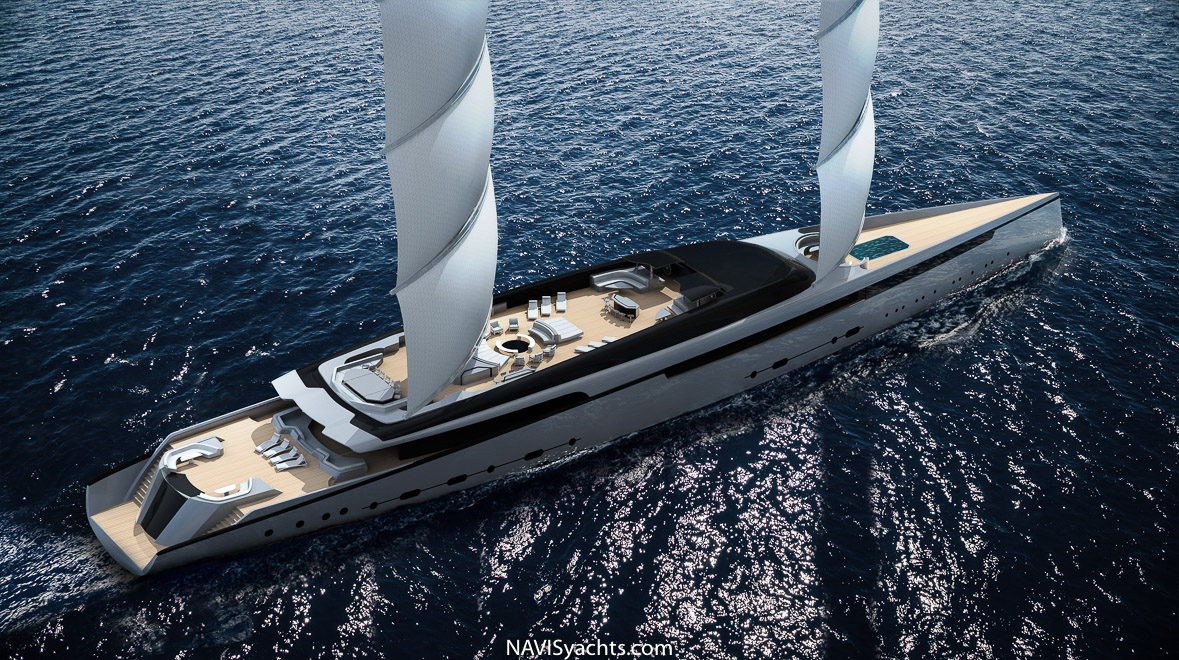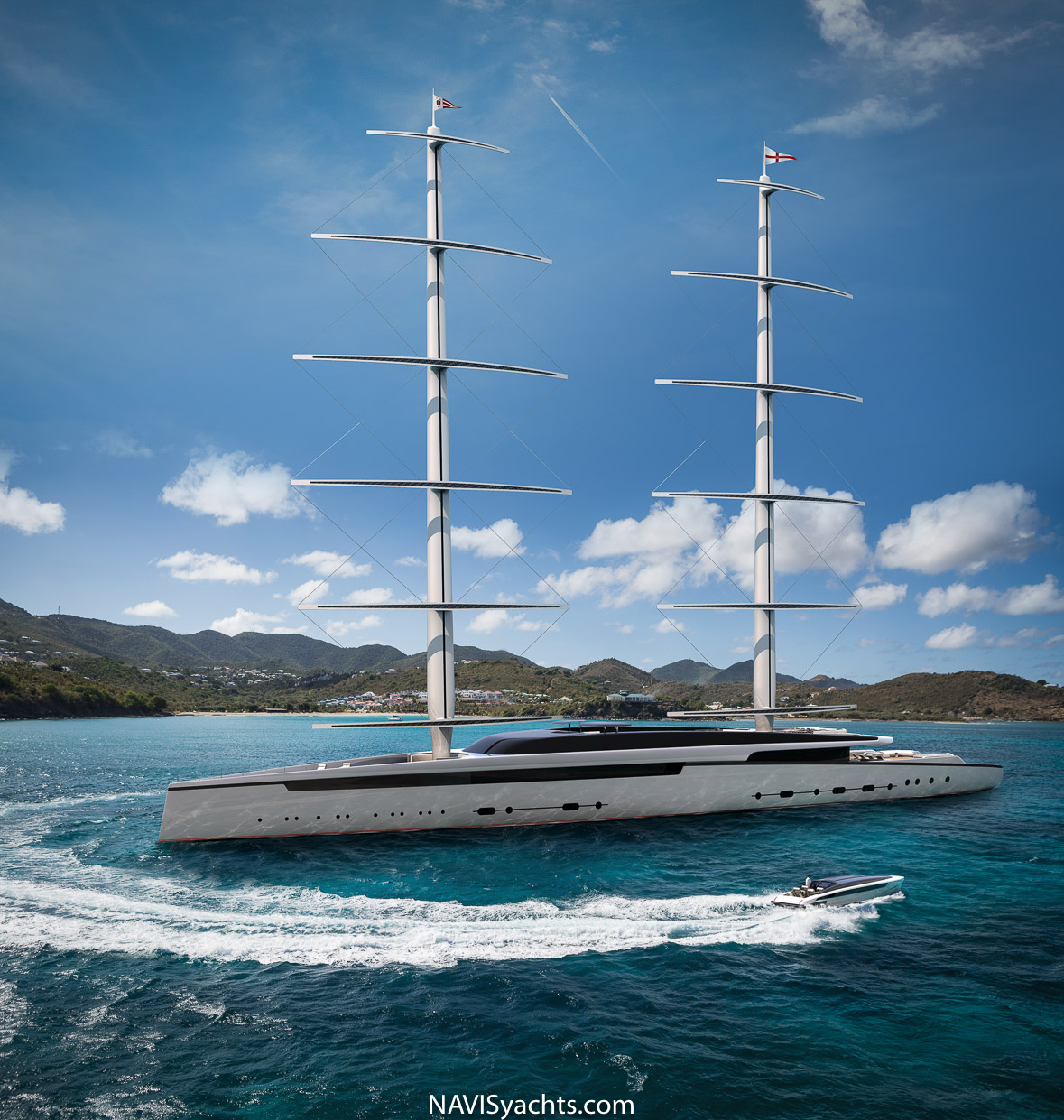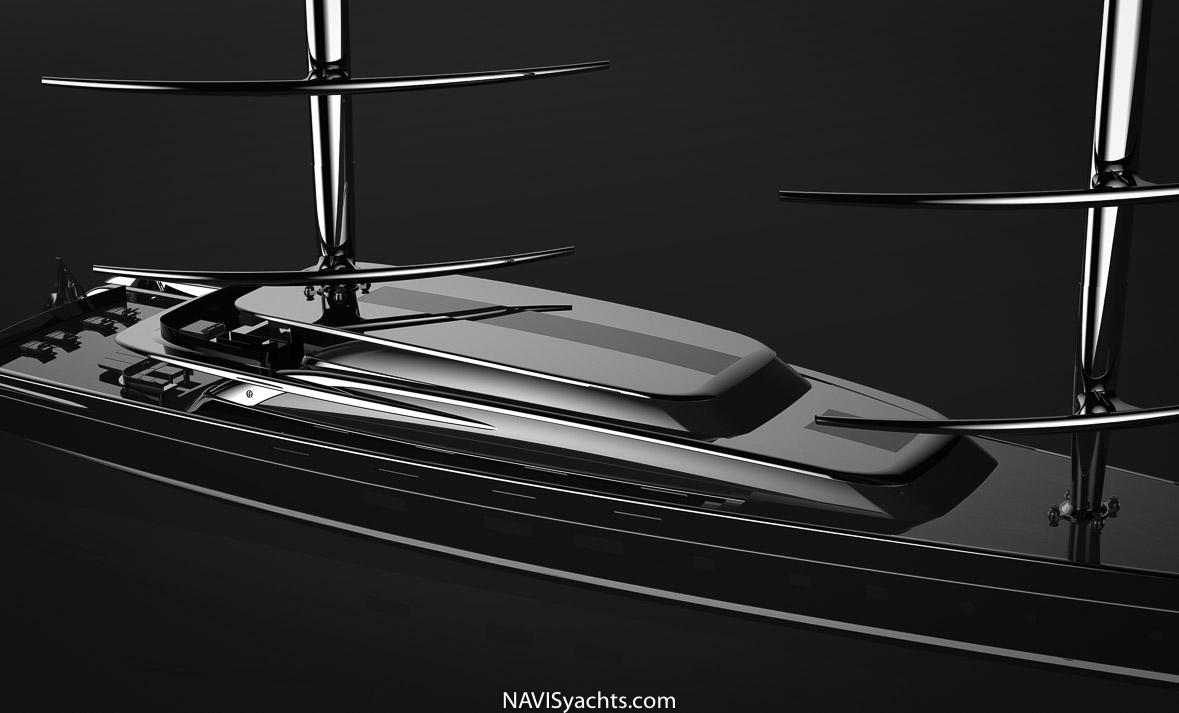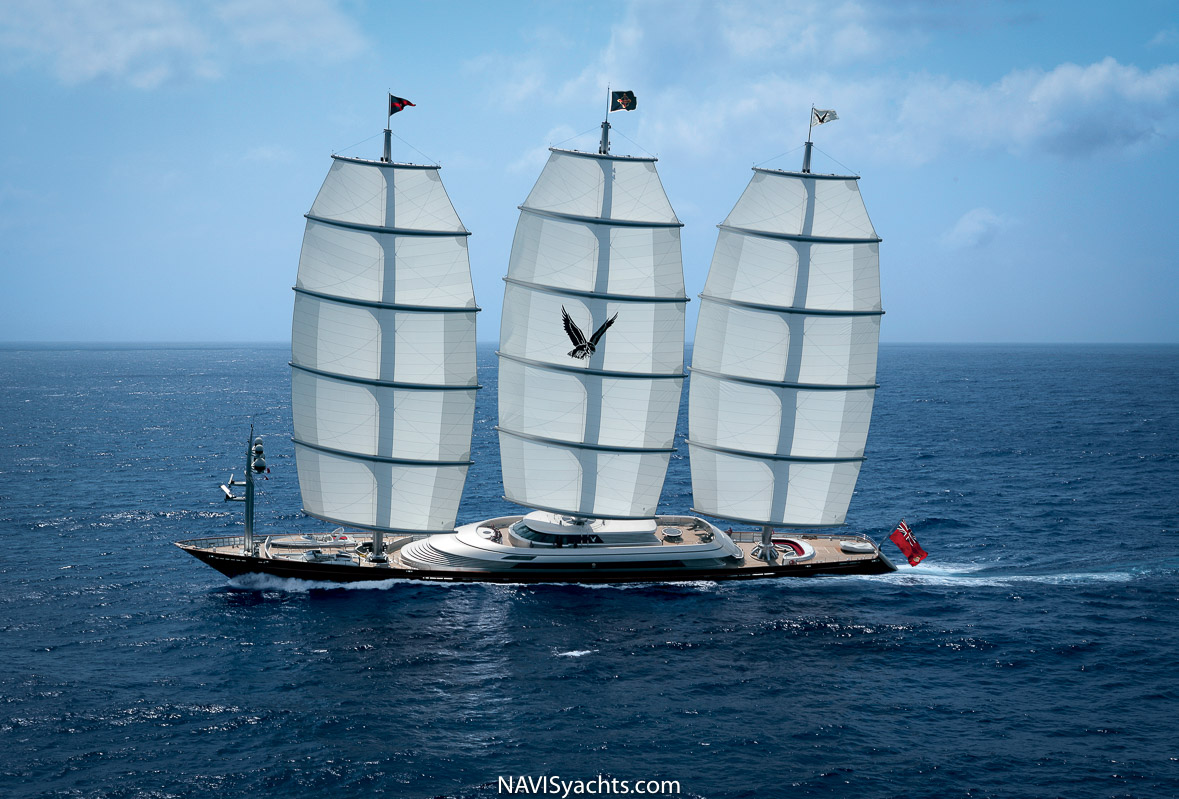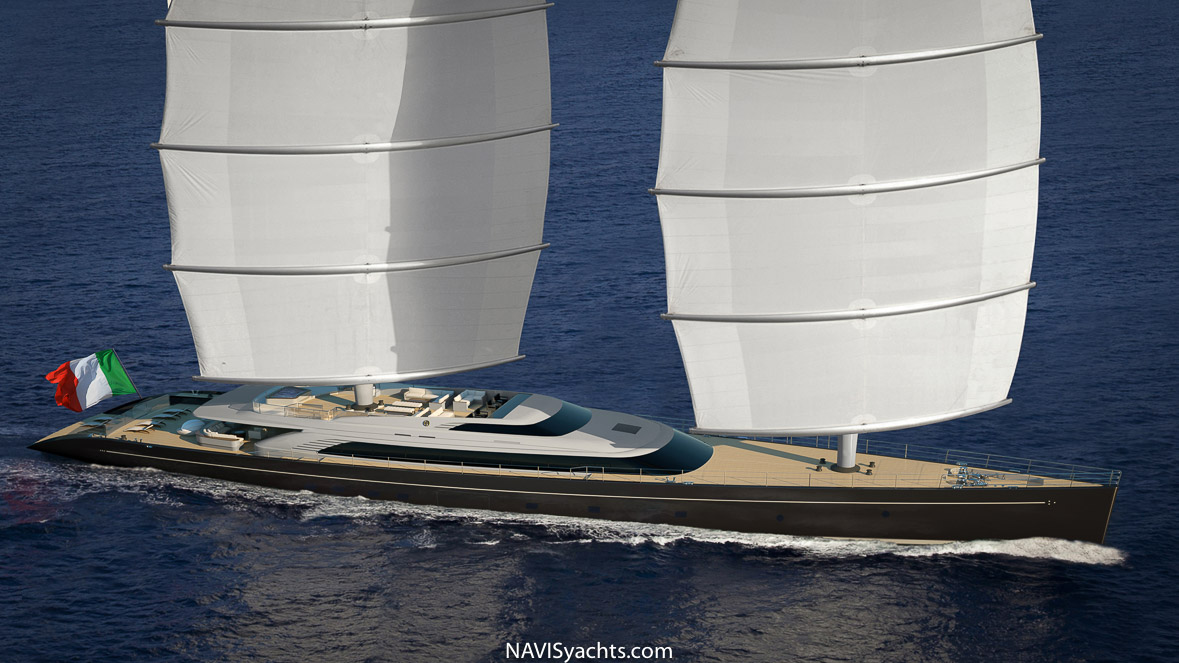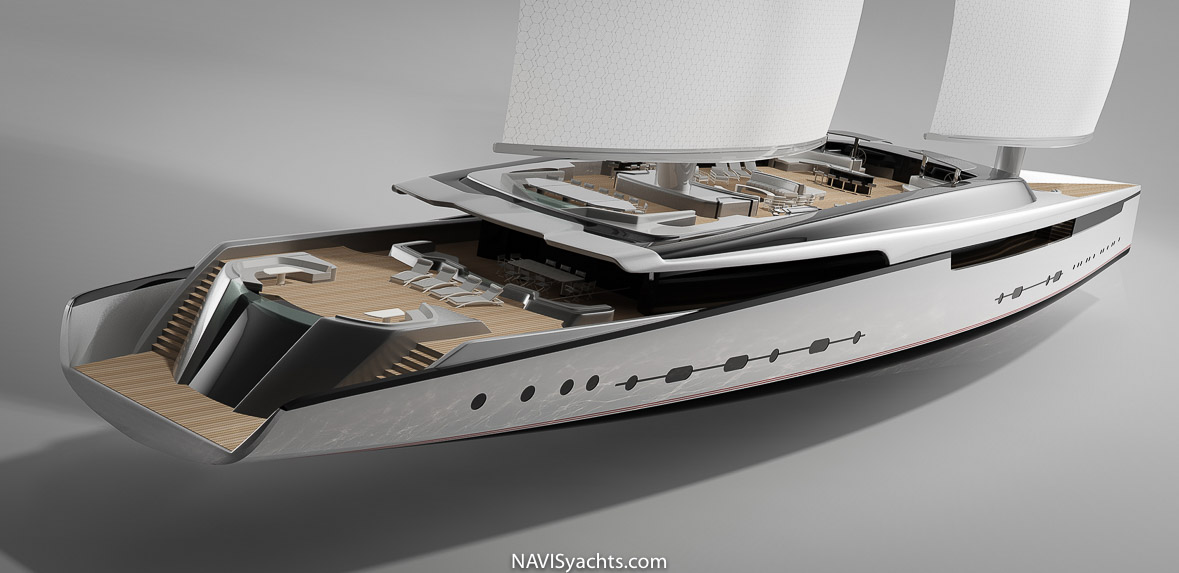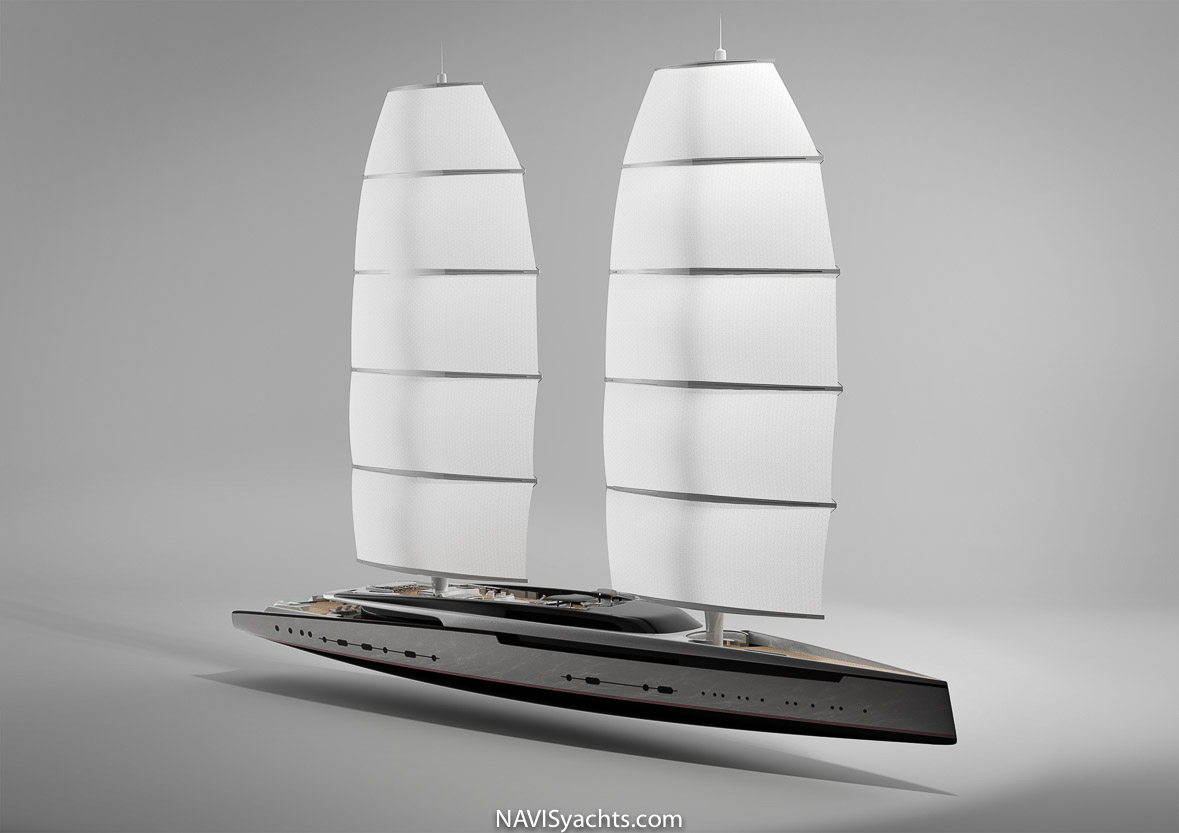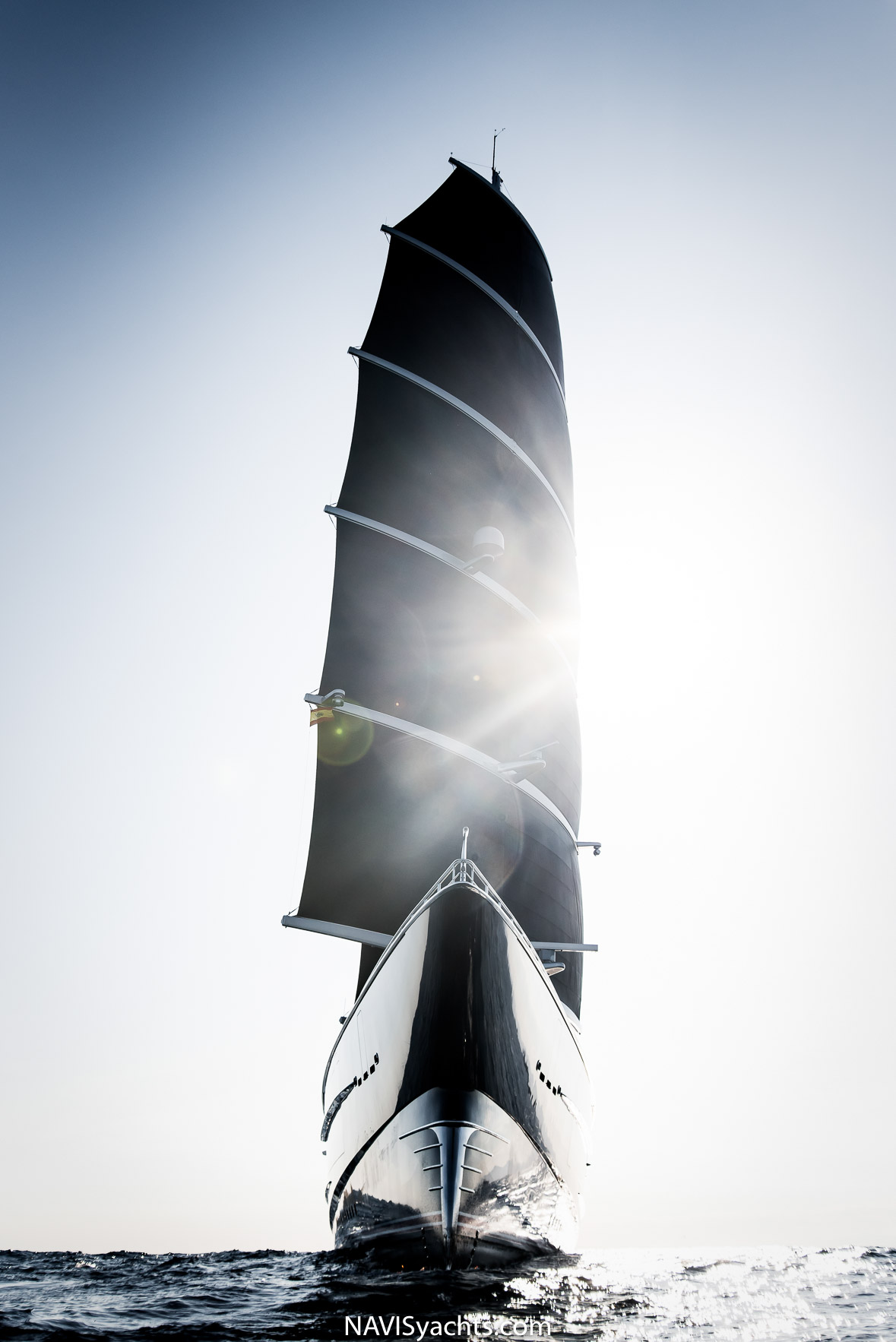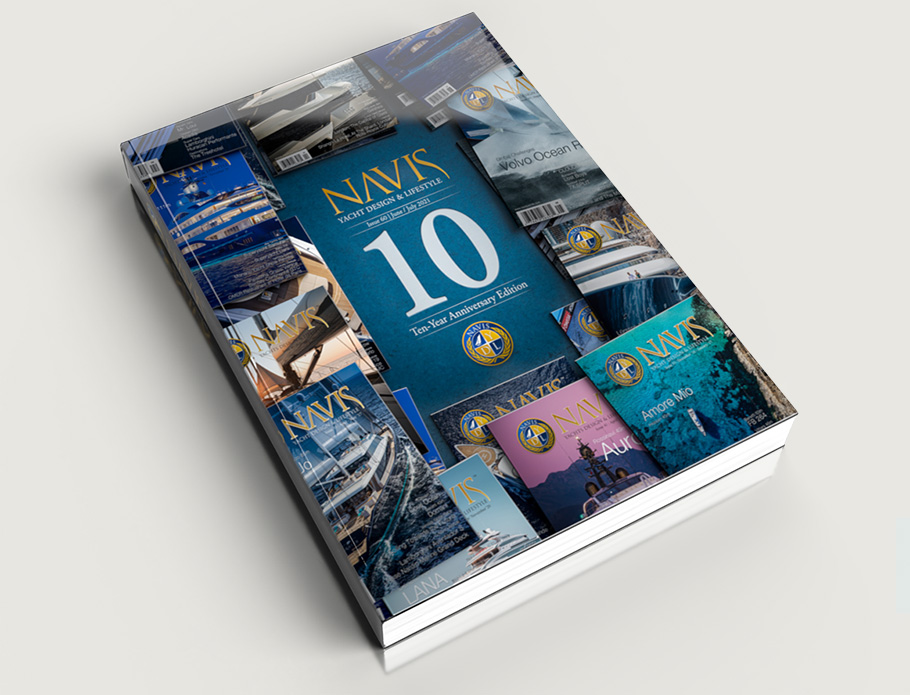Back to the future is perhaps the best way to describe the modern and innovative DynaRig. Let me explain. A century ago, when the Clipper Ships plied the high seas, they were called square riggers, and for good reason. Their rigs were square, well rectangular in many cases, but essentially square. The sails hung off yardarms and were managed by a large crew of fearless sailors who scaled the rig hanging over the yardarms to raise and douse the sails. It had to be that way. There was no way that a conventional sloop kind of rig would work on boats that large. Those behemoths needed sail area, and the only way to get it was a number of masts, each hanging numerous sails.
Fast forward a hundred years, and modern SuperYachts are being built that rival those Clipper Ships in length, and in many cases, they are much bigger. They too need sail area to power them, and yacht designers and engineers have managed to scale up conventional rigs to accommodate. But the yachts keep getting bigger and bigger, and SuperYacht owners had to start looking for a more practical way to manage the sail area. Enter the DynaRig. The DynaRig is a modern version of the square rig and owes its origin to work done in the sixties by the German captain W Prölls who at that time believed the system could provide propulsion for cargo ships. The price of fuel was high; wind was still free. It turned out that they never built a rig like that for a ship. The weight of a steel spar and the complexity of operating sails of that scale was beyond what was available at the time. Enter carbon fiber and modern-day computing. Also, enter Tom Perkins, one of Silicon Valleys most successful venture capitalists who didn’t make his fortune by being an in-box thinker.
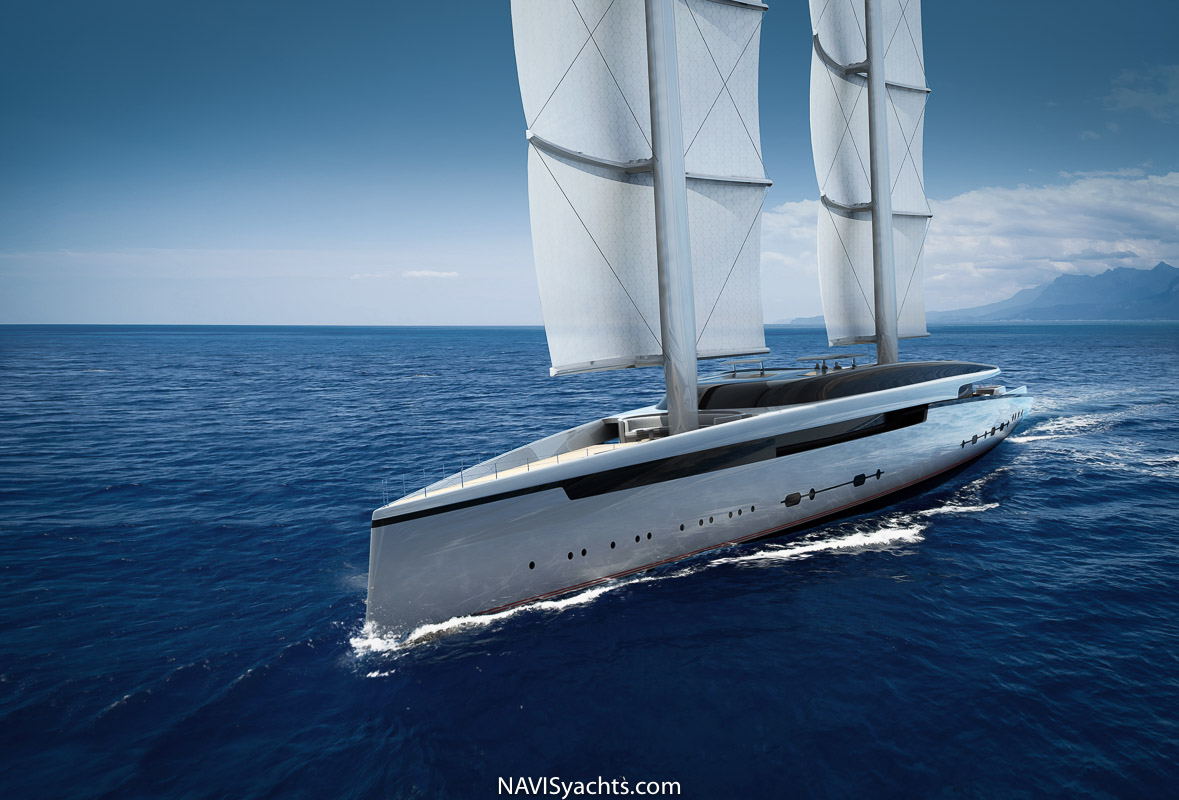
Perkins had owned two large Perini Navi but had his sights set on a much larger yacht. He wanted something in the range of 90 meters in length. That’s close to 300 feet, a yacht that would dwarf some of the larger Clipper Ships. Perkins knew that building a yacht of that scale would present some challenges, but powering a yacht that size might present the ultimate challenge. Building this yacht will require a special team, and Tom Perkins had the unique ability to identify the correct professionals, and built the dream team for the project. This way, he selected Perini Navi shipyard to be in charge of the construction, Dykstra Naval Architects for designing its sail plan and naval architecture, and Magma Structures to build a nearly impossible rig.
He consulted with renowned yacht designer Gerard Dykstra, head of Dykstra Naval Architects, one of the foremost design teams of SuperYachts. Dykstra circumnavigated the world in 1977/78 aboard the Dutch yacht Flyer in the Whitbread Round the World Race. He cut his teeth on the open ocean and brought a certain sense of practicality to his yacht design firm. He suggested that Perkins consider a DynaRig for his new yacht. He also collaborated with Damon Roberts, an engineer with Magma Structures, which is located in Portsmouth on the south coast of England. Dykstra had the idea of a DynaRig, but the heavy lifting, the design, and engineering came from Roberts. Meanwhile, Perkins, not a man to just plow ahead without any research, did his research and decided that the DynaRig made perfect sense for his yacht, and thus the Maltese Falcon and the Falcon Rig was born. The entire project was a team effort between people and companies that had built up trust in each other’s ability for over a decade. Perkins was satisfied with his previous yachts from Perini Navi, Perini Navi knew that Dykstra could be the one to execute a design, and Dykstra knew that Damon Roberts and Magma Structures could pull off one of the most complex aspects of the entire yacht; the sail plan, featuring Perini Navi’s sail-handling system. Tom Perkins led the charge. He had the vision for the Maltese Falcon, the intricate details were there in his head, but it took a very close-knit team to pull it off in a not so subtle way. The rig aboard the Maltese Falcon was a groundbreaking advance, and the world of SuperYachts might be forever changed.
The Falcon Rig starts to make sense on yachts around the 50-meter range, and above. The main reason is simplicity. To power a yacht that large with a conventional fore-and-aft rig, you need a huge mast, probably a mizzen too, in order to provide the necessary sail power. Along with this comes complexity. You need rigging that can manage the loads, winches that can handle the enormous sails and crew that can deal with it all if you suddenly get caught in an unexpected squall. The Falcon Rig is actually a simple system that can be managed by one person with the push of a button. Just like the clippers of old, the sails are rectangular, but unlike the clippers of old, they are furled into the mast, thus avoiding the need for an army of sailors. The sails are rolled onto a vertical gantry inside each mast and can be precisely controlled by the person in charge of the sails who is known as the Rig Master. If the breeze is up and the loads are increased the Rig Master might need to “feather” the mast a little allowing the sail to backwind a small amount to take the load off the sail, but that too is a simple task operated by a push-button or a joystick from a central control pod.
Unlike conventional triangular sails where enormous loads are at the head, tack, and clew, the rectangular sails don’t see that kind of loading. They also don’t see the kind of chafe found on more conventional masts. In fact, where a conventional sloop rig will need some high-tech membrane sails made from the latest high-tech fiber to manage the loads, the sails for many DynaRigs have gone retro and are made out of Dacron. This dramatically reduces the cost of sails, and you also end up with sails that are easy to maintain. Most sailmakers anywhere in the world are familiar with Dacron and can do the necessary maintenance. Also, remember that once the boat is at the dock or on anchor, the sails are neatly tucked into the mast away from the constant threat of UV degradation.
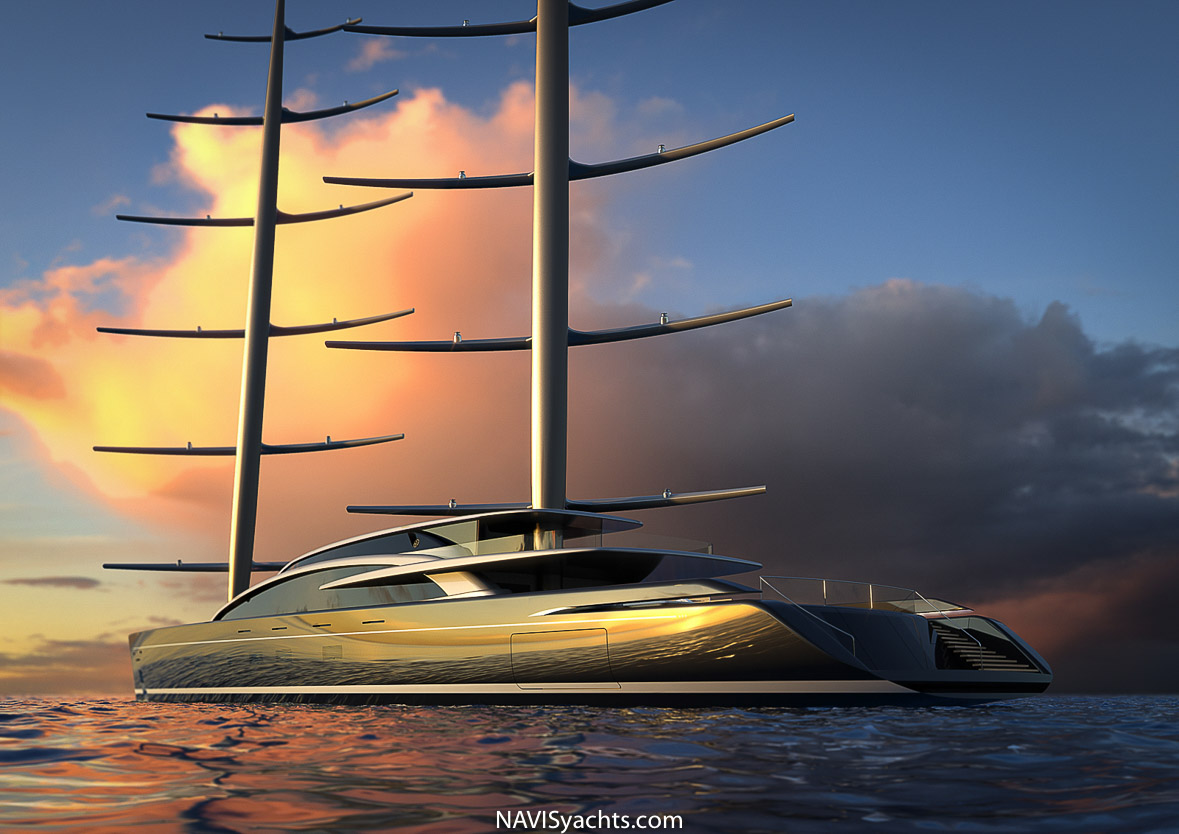
On a conventional sloop or ketch, you need a decent size crew to manage the sail plan even with modern conveniences like electric winches and hydraulic roller furling. This becomes an even greater issue when you need to bear away to sail downwind. With the Falcon Rig, all it takes is a simple push of a button to have the masts rotate and expose all that sail area to the breeze from behind. With a more conventional rig, it takes a number of skilled sailors to set the spinnaker. Bearing away is not the only convenience that the Falcon Rig offers. Another big convenience is the ability to gybe without fear, fear of the boom sweeping the deck as the stern moves through the eye of the wind. All these maneuvers can be programmed so that the autopilot communicates with the masts to gently rotate as the boat changes course. With a Falcon Rig, it takes a single person to set the sails, which can be done in a matter of minutes, and a single person to gybe the boat, even in gale-force winds.
DynaRigs are infinitely safer than conventional masts. There are only two points of failure; the deck bearing and the heel bearing. If you look at a conventional mast with numerous spreaders and discontinuous rigging, there are multiple failure points. A single turnbuckle that fails can bring the whole rig down. The possibilities for failure are pretty much endless despite numerous load sensors, all monitoring the mast and sails. Carbon DynaRigs are equipped with optical fibers that constantly monitor the loads throughout the mast. These loads are displayed where they can be closely monitored for safety, and they can also be programmed into the mast computer system to automatically change the attitude of the rigs to lower the loads if need be. Again let me point out that this can all be managed by one person; the Rig Master. In addition, the most obvious and significant safety aspect is experienced on board is that guests and crew can move around the deck at all times without having to be concerned of the highly loaded ropes that are needed on conventional rigs to control the sails particularly in maneuvers where these ropes and sails can be moving violently. With the DynaRig, everything happens above the heads of those on deck.
Many SuperYacht owners are aware of fuel costs, especially on long offshore voyages, and when the engine is used because dealing with the sails is “hardly worth the effort.” The Falcon Rig has to be the greenest friendly thing to happen to the big boat industry in a generation. The system is so easy to use that it almost seems more work to start the engine than to deploy the sails. In fact, the rig is so easy to use that the fuel savings are significant, but it’s more than that. Sailing, being powered by just the wind, is what has attracted so many people to this beautiful mode of transportation in the first place, but over time many are motoring because of the hassle of setting the sails. No more since the Falcon Rig. You can practically sail dock to dock without using the engine. With the evolution of hybrid propulsion installations and regeneration modes when under sail, sailing on a superyacht with zero emissions is again possible.
There is one area, however, where a conventional fore-and-aft rig may have an advantage, and that is sailing close-hauled. Those old Clipper Ships tacked through a 120-degree angle. The DynaRig is infinitely better than that but perhaps not quite as efficient as a sloop or ketch. A small price to pay, and besides these days the weather predicting apps have become sosophisticated that a good yacht captain can plan a crossing where there is practically no upwind sailing.
Compared to a simple stayed aluminium or carbon rig, the Falcon Rig is more expensive, especially considering the cost of the yardarms. So on a one-to-one comparison, it looks like the Falcon Rig might be too expensive, but let’s consider this. The Falcon Rig does not need all those winches and sails handling gear on the deck that a conventionally rigged yacht needs. Also, the sails are relatively low cost when compared to the high tech top-of-the-line fibers and sophisticated engineering required to build sails for a conventional fore-and-aft rig. Plus, there is hardly any standing or running rigging which needs timely replacement, and the masts do not have to be taken out of the boat for inspection on a regular basis. If you are planning to keep your SuperYacht for a number of years, investing in a Falcon Rig may well be an investment that pays off over time.Lastly, think about the huge loads that are placed on the hull of a yacht with a conventional fore-and-aft rig. Massive hydraulics are needed to get the right forestay tension. The backstay is loaded up, the mast is compressed, the forestay is tightened, and the load goes directly onto the hull in some cases bending the boat.
There are two SuperYachts with DynaRigs plying the Trade Winds just as the Clippers had done a century ago. The aforementioned Perini Navi built 88-meter Maltese Falcon, the yacht that gives the name of Falcon Rig to the DynaRig, and Black Pearl built at Oceanco. Black Pearl’s masts tower above those of Maltese Falcon, but they are necessary. Black Pearl is 107 meters in length. At Yacht Club de Monaco on the occasion of the Monaco Yacht Show in 2019, Perini Navi showcased the Falcon Rig Gallery, an entire product range spanning 56m to 92m models and inspired by the iconic Maltese Falcon. Same too with Royal Huisman Shipyard. They launched Lotus, an ambitious project that collaborates with Dykstra Naval Architects and ThirtyC Yacht Design, featuring two towering 88-meter DynaRigs for a new 70-meter SuperYacht.
The Maltese Falcon and Tom Perkins and his collaborators seem to have struck a nerve, and the future of super sailing yachts looks bright.
